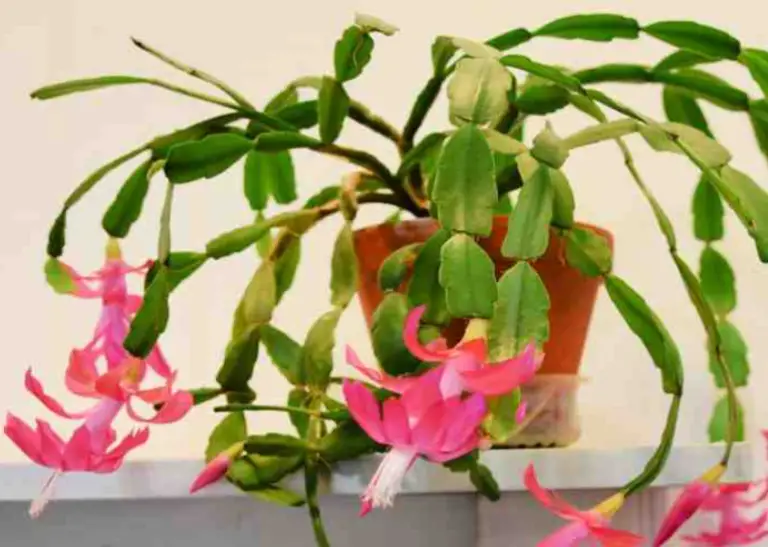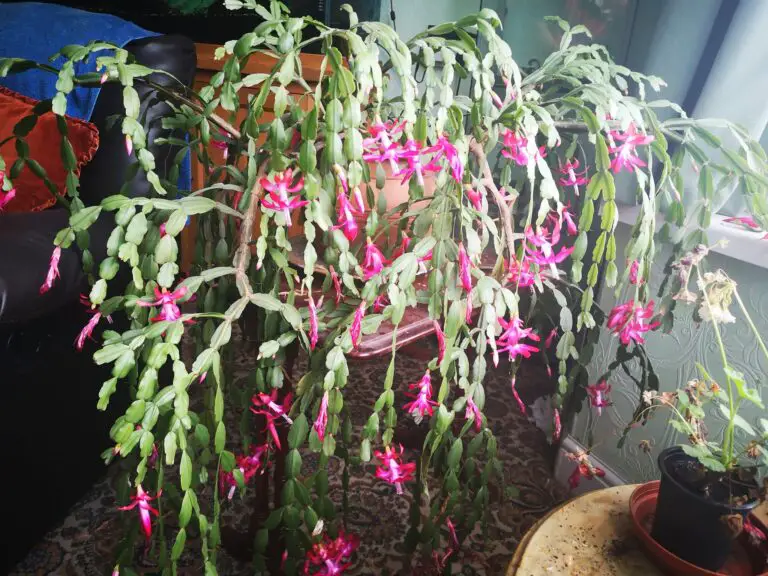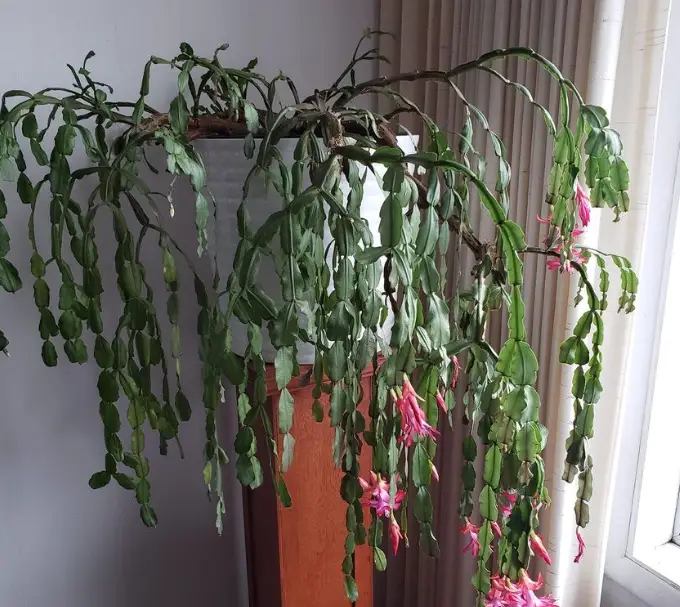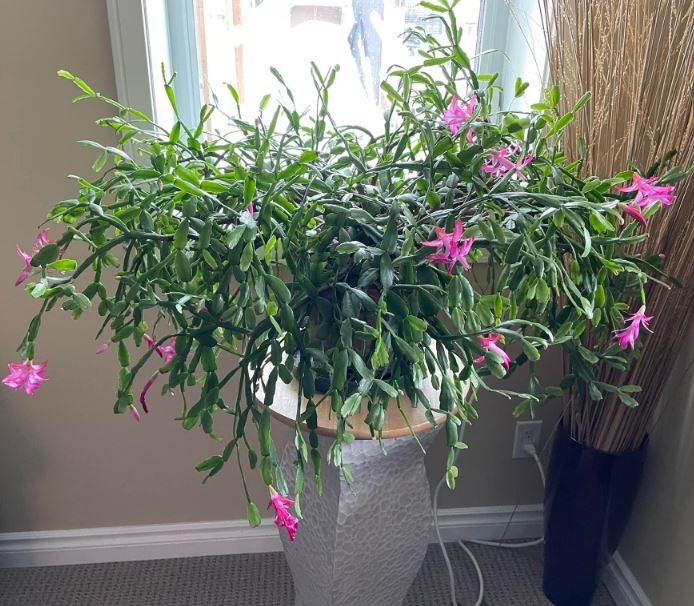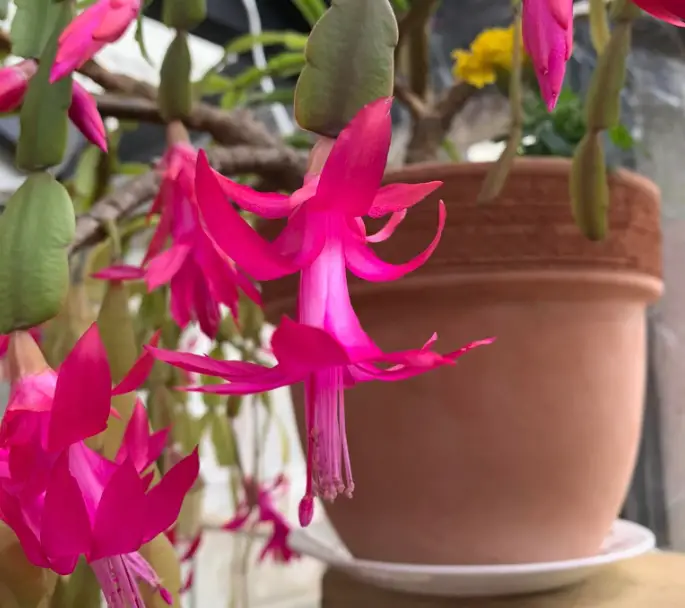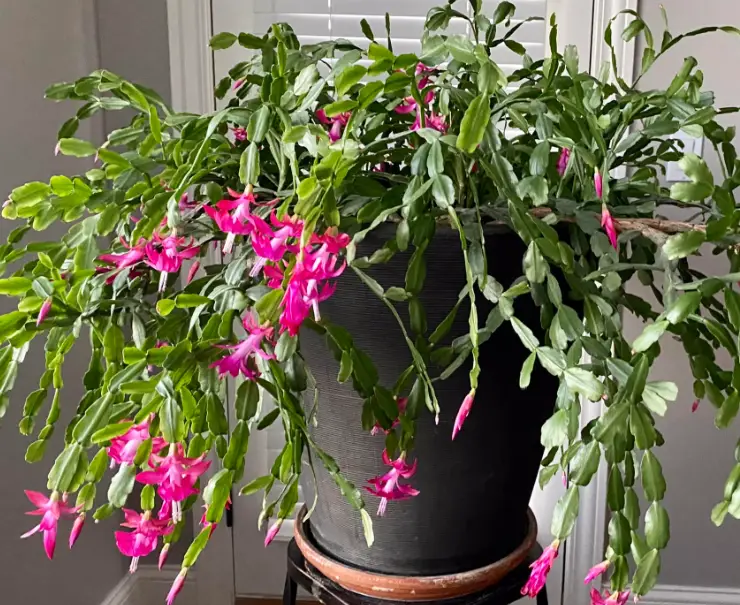Christmas Cactus Root Rot: Signs + How to Treat
Root rot is a fungal disease that causes plant roots to decay. It is a fairly common problem in Christmas cactus plants and related species, the Easter and Thanksgiving cactus.
Christmas cactus root rot may result from overwatering or poor drainage. When soil gets waterlogged, roots stop getting oxygen, making them suffocate and die. Additionally, moist conditions encourage the growth of fungi that causes root rot.
Signs of root rot may vary from plant to plant, but you’ll commonly see the Christmas cactus wilting, leaves turning yellow, or stunted growth.
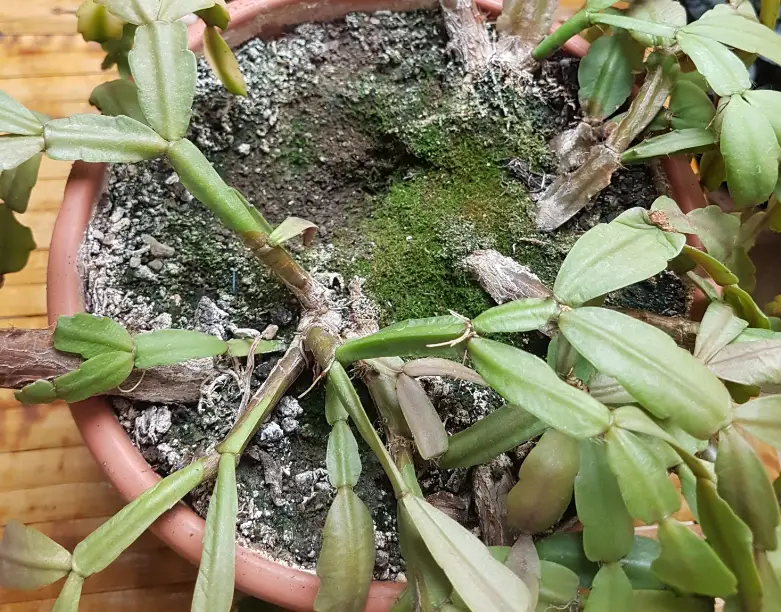
Christmas cactus root rot causes
There are three main causes of root rot in a Christmas cactus; overwatering, poorly draining soil, and pests. Let’s look at each one of them and how to fix it.
1. Overwatering
Watering a Christmas cactus is a delicate balance that can bring blessings or problems. Improper watering can result in less or excessive moisture in the soil. Christmas cactus prefers averagely moist soil that is not too wet.
Overwatering prevents air from reaching the plant roots, which causes them to drown and die. The conditions also attract bacteria and fungi that cause root rots. When the roots get mushy, the whole plant stops receiving important supplies, water, and nutrients.
How to water the right way
Generally, watering a Christmas cactus depends on the climatic conditions. More watering should be done during the growing season in spring and summer and less during winter.
As a rule of thumb, water your Christmas cactus only when the top inch of the soil feels dry to the touch. Let the soil dry slightly between your watering.
When watering, give the soil a good soak until you see the excess water coming out through the pot drainage holes. Do let the plant sit in any standing water.
2. Poor drainage
Poorly draining soil will still harm the plant even when watering is done correctly. If the soil doesn’t drain well, water can accumulate around the roots. This displaces air resulting in a reduced amount of oxygen the roots need.
Uisng incorrect pot for a Christmas cactus can also interfear with soil drainage. If a pot does not have adequate drainage holes, it stops the excess water from draining away. The accumulated water in the bottom of the pot will eventually cause roots to rot.
Additionally, the size and material of the pot can also affect the drainage of water and flow of air around the rrot ball. A pot that is too large for the plant may hold excess water which can take longer to drain away.
Plastic or glazed ceramic pots are less porous and may not be ideal for cactus and other plants that are prone to root rot.
Therefore, it’s important to choose a sizeable pot with drainage holes. Unglazed terracotta pots would be a good choice for a Christmas cactus. Its porous nature allows free flow of air aroun dthe roots.
3. Pests and bugs
Pests tmay not directly cause the cactus root rot, but they can contribute to the conditions that lead to this problem. Pests such as mealybugs, spider mites and scale insects can damage the cactus roots, making them susceptible to fungal and bacterial infections that cause root rot.
Additionally, pests, such as fungus gnats, are attracted to moist soil conditions. Their larvae feed on organic matter in the soil and decaying roots of plants, further contributing to the damage that problem of root rot.
How to save Christmas cactus fromroot rot
If you suspect that your Christmas cactus has a root rot problem, here is what to do to save it:
- Stop watering the plant immediately and let the soil dry out completely before watering again.
- Remove the plant from the soil and inspect the roots. If they are brown or black and mushy, they are likely damaged. Healthy roots should be white or light brown and firm.
- Trim away all the damaged roots using sterilized scissors or a knife and discard them.
- Rinse the plant and repot it in fresh, well-draining soil. Make sure the pot has drainage holes to allow excess water to escape.
- Water the plant sparingly, allowing the soil to dry out slightly between waterings.
It may be difficult to save a plant severely affected by root rot. In this case, simply propagate your Christmas cactus to get new plants. It should take about 2 to 3 weeks for the cuttings to root and get new growth – usually small reddish stems at the tips of the cuttings.
References:
- University of Wisconsin-Madison: Root Rots on Houseplants
- The Pennsylvania State University: Christmas Cactus Diseases
- The University of Minnesota Extension: Holiday Cacti
My name is Diane M Lewik, and I am the founder of this website. I am a degree holder in plant biology from the University of California – Berkeley. Over the years, I have cultivated a vast collection of succulents and I have learned a great deal about how to grow and care for these unique plants. Feel free to ask any questions in the comment section below.
